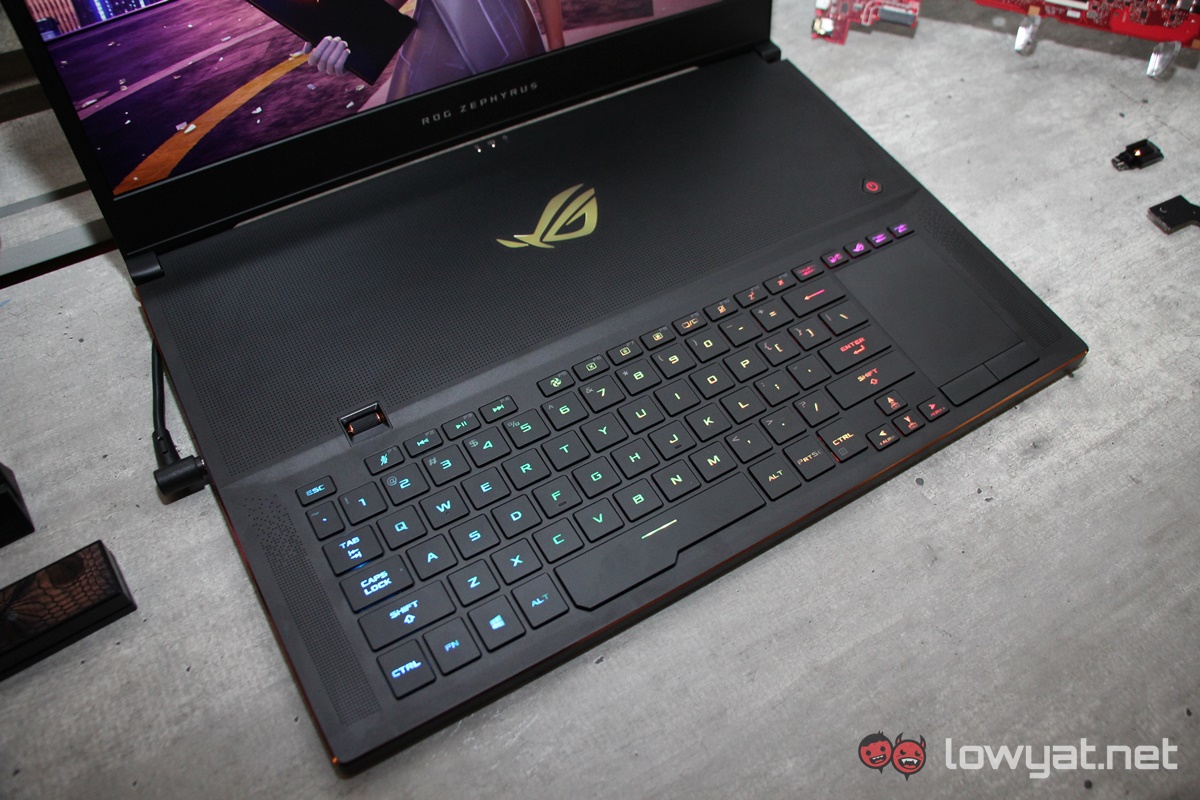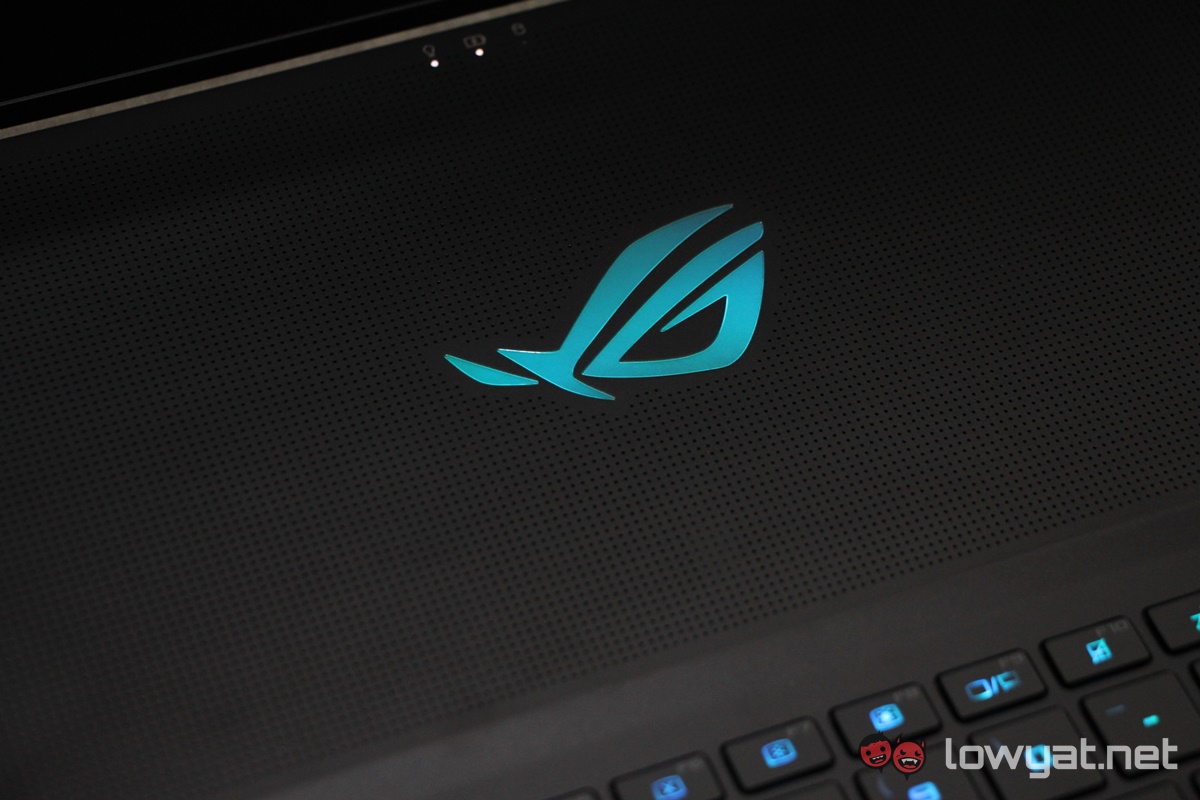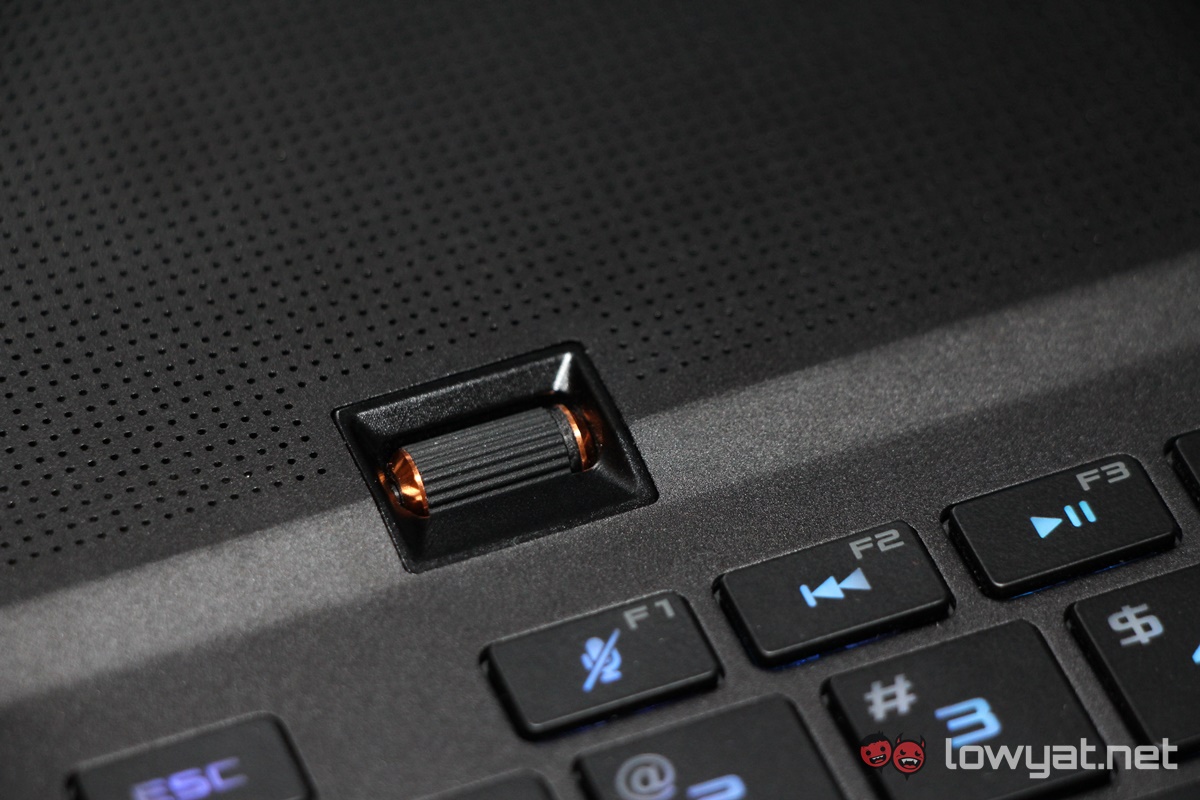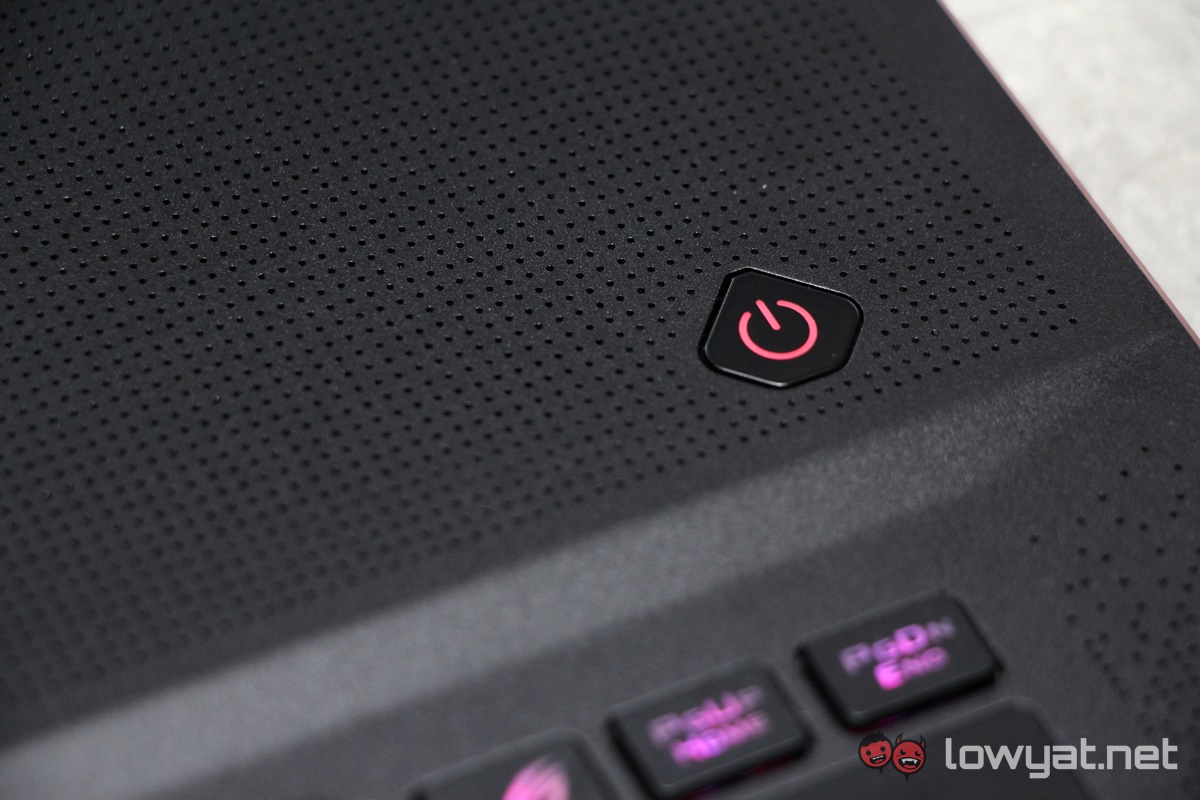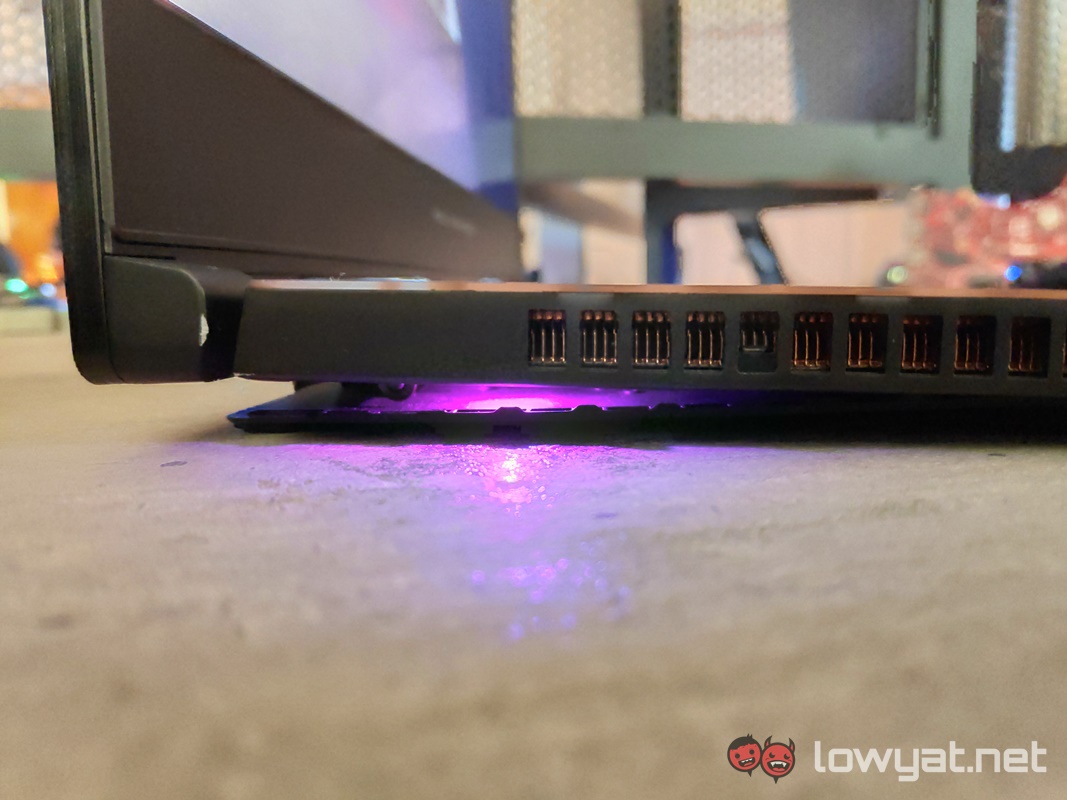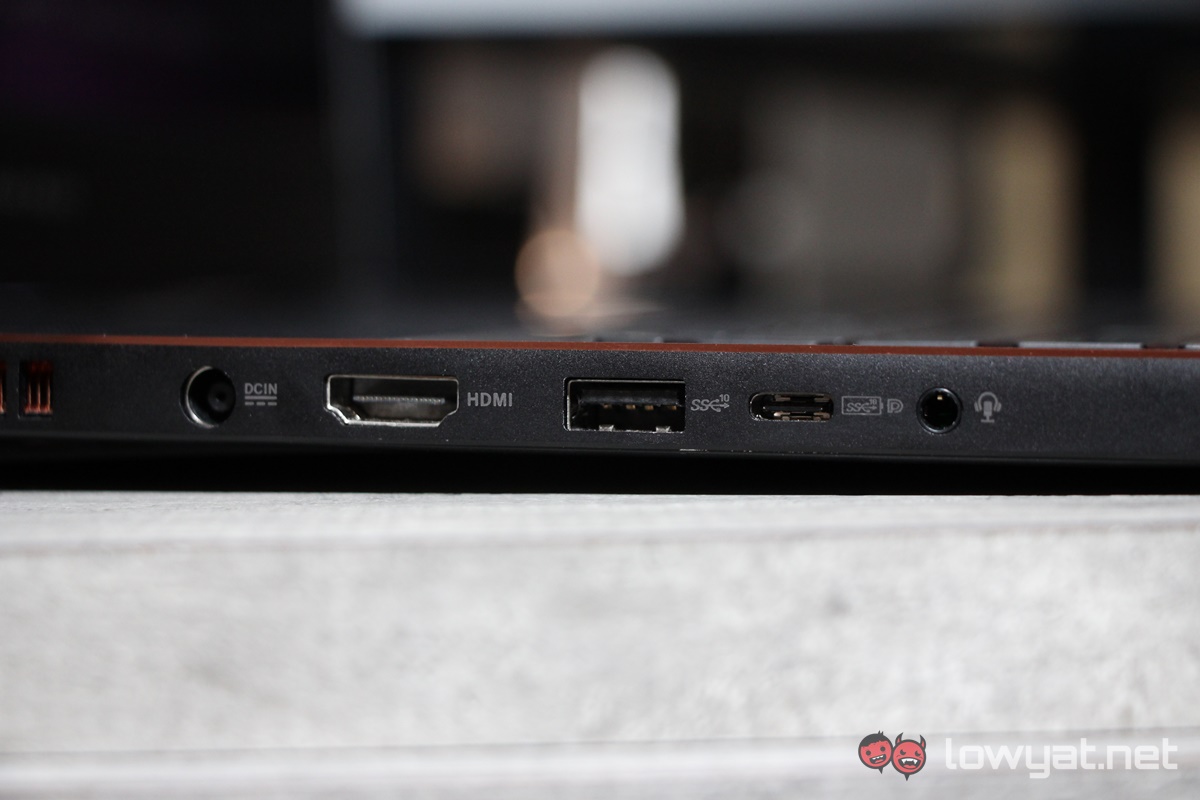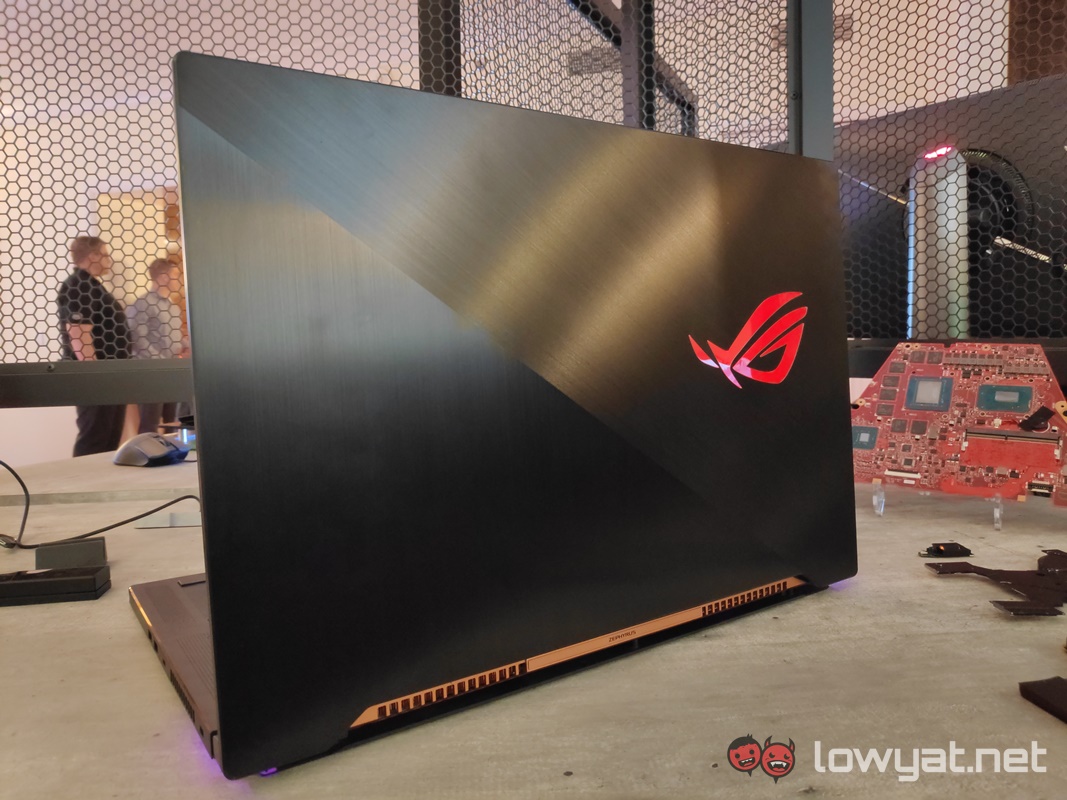The first thought that should grip you is the sheer size of it, or illusion of it. It may still retain the same 15.6-inch chassis, but ASUS has managed to fit in a large 17.3-inch Full HD display with extremely thin bezels on the sides and at the top. Giving the GX701 its larger screen real estate. Alas, fitting a display this large into a 15.6-inch chassis comes at a price. That price, by the way, is the absence of a webcam. On a personal note, not having the webcam is a small price to pay, especially since I’m a person who rarely uses the physical feature. Having said that, ASUS isn’t oblivious to the fact that some of us may want a little facetime with people, and will actually provide an external webcam module with the GX701.
Even the base of the GX701 sports a different design altogether. Gone is the cascading, slash-type vent design from the original Zephyrus. It’s now replaced by a more uniformed CNC drilled vent that is clearly designed to provide this lean, mean, portable powerhouse with better airflow. In addition, the ROG emblem that’s emblazoned in the middle has also received the RGB treatment, and now glows bright red (or any colour of your choice, for that matter) whenever it is turned on. On the exterior, ASUS has maintained the same machine-cut, brushed aluminium finish for the GX701’s aesthetics. Like it’s predecessor before it, the ROG emblem is emblazoned right across the back of the display. Complete with RGB LEDs, all of which is customizable through ASUS’ Aura Sync RGB software.
ASUS has also taken the liberty of installing the notebook’s fingerprint scanner just above the top left corner of the keyboard. Usually, I don’t think much of the feature on notebook, let alone use it. But to be honest, it’s clear as day that ASUS actually put a lot of thought into its appearance. Seriously, it really is as striking as it looks. Exhausting the air out of the GX701 hasn’t since the notebook’s inception. The bottom of the base still lifts up the notebook via a dual hinge design, which in turn provides an elevated angle for users, either when gaming or typing.
Regarding the latter, the mechanical keyboard experience of the GX701 is more or less the same as its predecessor. Even with its uncomfortable placement right down at the edge of the base. Let me be clear; I understand why ASUS came up with the design back when it launched the first Zephyrus, but that doesn’t change the fact that I am not a fan of typing without some form of support for my wrist. I am fully aware that the GX701 is, at the core, meant to serve as a gaming desktop replacement. But in my opinion, a notebook – regardless of its calibre – should always provide a relatively comfortable typing experience. Bare minimum. That’s probably also the reason why I actually liked the brand’s more subdued Zephyrus M.
Naturally, the cherry on the GX701’s sundae is none other than what lies nestled inside it; an NVIDIA GeForce RTX 2080 Max-Q discrete GPU. As many of you know, NVIDIA’s new Turing-based GPU is designed to provide an extra added layer of realism through the wondrous technology of real-time ray-tracing and AI technology (Re: DLSS). At this stage, I would normally speak about a gaming notebook’s on-site gaming performance. Unfortunately, neither the GX701 nor the monster of a desktop replacement, the ROG Mothership, had any of the typical fare of RTX-ready titles installed or ready for me to test. This was because – for whatever reason – NVIDIA had slapped some kind of performance embargo on ASUS’ new Zephyrus lineup.
I found the reason quite odd, because back at MSI’s booth, the competitor brand’s own flagship notebook was running Battlefield V like there wasn’t a care in the world for it.
Ultimately, it’s clear that when it comes to looks, the ASUS ROG Zephyrus S GX701 clearly doesn’t stray far from the norm. If anything, it’s most probably because ASUS is adhering to the “don’t fix it if it isn’t broken” philosophy, while making a few incremental upgrades to suit the changing tastes and times. Beyond NVIDIA’s 29 January embargo for all RTX-powered notebooks, there’s still no official word as to when the GX701 will be arriving on our shores, but needless to say, we’d definitely like to do a full review of the notebook when it does.
